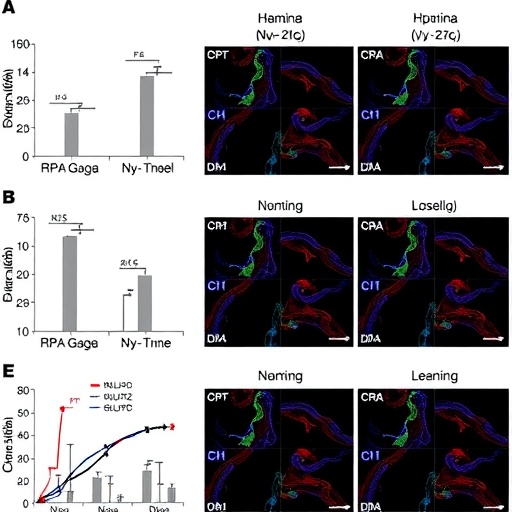A protective mechanism that allows fruit flies to lay fewer eggs in response to bacterial infection is explained in a study published in the journal eLife.
The findings represent a case of 'behavioural immunity' in response to bacterial infection: in addition to triggering conventional antibacterial weaponry, fruit flies use nerve cell signalling pathways to reduce the impact of infection on their offspring and environment.
It is widely known that all living organisms adapt their behaviour in response to infection, but the mechanisms behind this are less understood. Recent studies in fruit flies have started to unravel these behaviours, showing, for example, that flies can avoid contaminated food by sensing an odour emitted by dangerous bacteria. Professor Julien Royet, Group Leader at Aix-Marseille University, France, set out to investigate this further in the fruit fly by studying another protective behaviour: laying less eggs.
Following bacterial infection in fruit flies, Royet and his team saw a strong but temporary reduction in their egg-laying activity. "Having seen this reduction, we set out to find the signal that triggered it," recalls Royet. "We know that peptidoglycan, a component of the bacterial cell wall, activates the NF-kB pathway, which controls the immune response in the fruit fly. We were however surprised to see that injection of purified peptidoglycan into the flies also affects egg-laying, suggesting that the same bacterial component regulates both immune and behavioural responses to bacteria."
Having demonstrated that peptidoglycan also activates the NF-kB pathway to control egg-laying, the team set out to understand exactly how egg-laying was altered. They found that flies with infections had three times as many matured eggs in the ovary as uninfected flies. As egg-laying resumes after 24 hours, the team concluded that infection temporarily blocks the release of the eggs into the oviduct, and that something was carefully controlling this process, to ensure that normal egg-laying continues once the threat of infection has passed.
"Since egg-laying behaviour is controlled by a complicated neuronal network in flies, one possibility was that peptidoglycan is acting directly on this network," explains lead author C. Leopold Kurz, research scientist at Aix-Marseille University. "We tested this hypothesis using various mutants and saw that, unexpectedly, peptidoglycan is indeed sensed by neurons."
The next step was to identify the subclass of neurons on which peptidoglycan acts to regulate egg-laying. The team looked at other mutant flies and saw that the neurons that produce octopamine – a key neurotransmitter involved in ovulation — are the ones that sense peptidoglycan.
"Taken together, our findings show that bacterial infection regulates ovulation by affecting the octopaminergic signalling pathway in neurons, via activation of the NF-kB pathway," says Royet. "A future challenge will be to test whether this NF-kB-dependent response to peptidoglycan following infection also occurs in the neurons of higher organisms and directly influences animal behaviour."
###
Reference
The paper 'Peptidoglycan sensing by octopaminergic neurons modulates Drosophila oviposition' can be freely accessed online at http://dx.doi.org/10.7554/eLife.21937. Contents, including text, figures, and data, are free to reuse under a CC BY 4.0 license.
Media contact
Emily Packer, eLife
[email protected]
01223 855373
About eLife
eLife is a unique collaboration between the funders and practitioners of research to improve the way important research is selected, presented, and shared. eLife publishes outstanding works across the life sciences and biomedicine — from basic biological research to applied, translational, and clinical studies. All papers are selected by active scientists in the research community. Decisions and responses are agreed by the reviewers and consolidated by the Reviewing Editor into a single, clear set of instructions for authors, removing the need for laborious cycles of revision and allowing authors to publish their findings quickly. eLife is supported by the Howard Hughes Medical Institute, the Max Planck Society, and the Wellcome Trust. Learn more at elifesciences.org.
Media Contact
Emily Packer
[email protected]
01-223-855-373
@elife
http://www.elifesciences.org
############
Story Source: Materials provided by Scienmag




